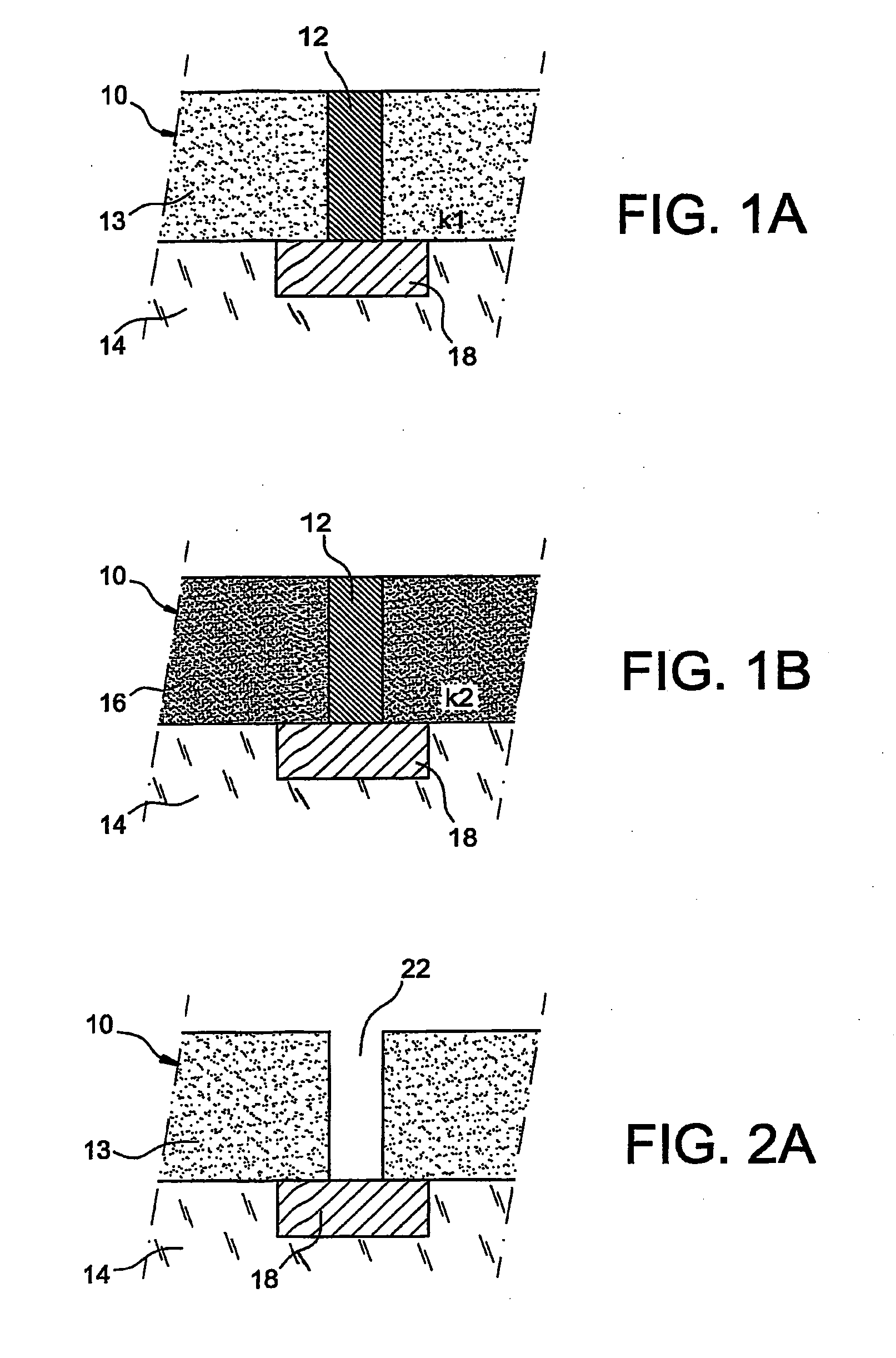Interconnection structure with low dielectric constant
a technology of dielectric constant and interconnection structure, which is applied in the direction of solid-state device manufacturing, electric apparatus, semiconductor/solid-state device manufacturing, etc., can solve the problems of complex production method, high cost, and high cost of low-dielectric constant materials, so as to achieve easy work, improve insulation properties, and improve the effect of work efficiency
- Summary
- Abstract
- Description
- Claims
- Application Information
AI Technical Summary
Benefits of technology
Problems solved by technology
Method used
Image
Examples
Embodiment Construction
[0060] An example of a method for producing a damascene-type interconnection structure will now be described.
[0061] As shown in FIG. 1A, starting with an interconnection structure comprising at least one insulating layer 10 based on a dielectric material 13 having a dielectric constant k1, for example greater than 3, 3.5 or 4.2, and a connection element 12 formed in, or through, said insulating layer 10, the dielectric material 13 is at least partially removed from the insulating layer 10. This removal is performed, for example, by chemical etching based on hydrofluoric HF acid, for example having a mass concentration below 50%, and for a duration on the order of 1 to 2 minutes, for example. This operation can be performed, for example, in a deoxygenated bath obtained by bubbling nitrogen so as to prevent corrosion of the metal interconnection element 12.
[0062] Then, the removed material 13 is replaced with a second dielectric material 16 having a dielectric constant k2 lower than...
PUM
 Login to View More
Login to View More Abstract
Description
Claims
Application Information
 Login to View More
Login to View More - R&D
- Intellectual Property
- Life Sciences
- Materials
- Tech Scout
- Unparalleled Data Quality
- Higher Quality Content
- 60% Fewer Hallucinations
Browse by: Latest US Patents, China's latest patents, Technical Efficacy Thesaurus, Application Domain, Technology Topic, Popular Technical Reports.
© 2025 PatSnap. All rights reserved.Legal|Privacy policy|Modern Slavery Act Transparency Statement|Sitemap|About US| Contact US: help@patsnap.com



